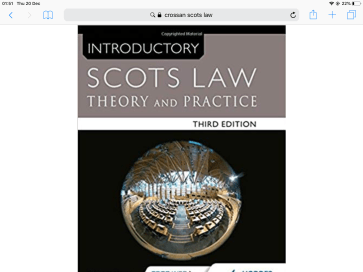
Photo by Bobby Rodriguezz on Unsplash
Misconduct
Several of my previous blogs have focussed on misconduct inside and outside the work place. In the most serious cases of (gross) misconduct, an employer could fairly dismiss an employee (Section 98(2)(b): Employment Rights Act 1996.
That said, employers are well advised to follow proper pre-dismissal procedures – usually in line with the latest ACAS Code of Practice on Discipline and Grievance at Work.
Summary (i.e. on the spot) dismissal can be an appropriate response to a breach of discipline by an employee, but I tend to caution employers against this. The eminent English judge, Sir Roger Megarry VC was quite correct to warn employers about the dangers of what they might perceive to be an open and shut case (see John v Rees & others [1969] 2AER 274, CD). It’s always better to be safe rather than sorry and by carrying out a procedure, the employer is minimising its exposure to risk i.e. the possibility of a successful unfair dismissal claim brought by the employee.
A typical disciplinary process usually consists of the following stages:
- Stage 1: The investigation of the allegations
- Stage 2: The disciplinary meeting
- Stage 3: The appeal hearing
If the investigation uncovers clear evidence that the employee should be exonerated of all allegations of misconduct, the employer is legally bound to put a stop to the disciplinary process (see A v B [2003] IRLR 405; Salford Royal NHS Foundation Trust v Roldan [2010] EWCA Civ 522; Miller v William Hill Organisation Ltd UKEAT/0336/12/SM [2013])
It is also important to note that the employer must set out the disciplinary charges as clearly as possible so that the employee can prepare her case. The employer cannot, under any circumstances, play fast and loose with the disciplinary charges as this may undermine the integrity of the entire disciplinary procedure (see Strouthos v London Underground [2004] IRLR 636 CA and Celebi v Scolarest Compass Group UK & Ireland Ltd UKEAT/0032/10/LA [2010]).
If, however, matters proceed to a formal, disciplinary meeting, the allegations must be put to the employee and the evidence which supports them. The employee in turn has the right to present her case to the disciplinary panel or manager taking the proceedings. In terms of the Employment Relations Act 1999, the employee has a right to be accompanied by a colleague or a recognised trade union representative.
Should the disciplinary meeting arrive at a decision to dismiss the employee for misconduct, it is extremely important to allow an appeal (see West Midlands Co-operative Society v Tipton [1986] 1 ALL ER 513). An appeal can lead to the dismissal being upheld or overturned; and it can be used to cure any defects in the previous stages of the disciplinary proceedings.
Discipline at work
It’s very common (indeed essential) for employers to have detailed codes of practice or discipline which regulate the behaviour of employees inside and outside the work place. The content of disciplinary codes should be clearly communicated to employees. For new employees, this could be carried out as part of their induction process. For existing employees, a regular series of training seminars or development events could accommodate this aim. The urban myth that what happened outside the work place is no business of the employer is that exactly that: a dangerous myth. If staff misbehaviour outside working hours causes serious reputational damage to the business or the organisation, the employer is entitled to treat this as gross misconduct and to use the ultimate disciplinary sanction of dismissal.
Examples of gross misconduct might include any of the following:
- Alcohol and drug abuse
- Acts of bullying & harassment
- Fraud
- Negligent performance of duties
- Theft
- Persistent late-coming
The above list is by no means an exhaustive one, but it covers some of the most common examples of gross misconduct.
As I have discussed in a previous blog, It happened outside work (or it’s my private life!) (published on 7 February 2019), employers do not have an automatic right to meddle in employees’ private lives. The right to a private life is protected in terms of Article 8 of the European Convention on Human Rights (as implemented by the both the Scotland Act 1998 and the Human Rights Act 1998). Employers will have to walk a very fine line between what is a legitimate act to protect their business interests and what would otherwise be unwarranted interference in the private lives of employees.
Lloyd’s of London
So, bearing all of the above in mind, it was with some interest that I read today that Lloyd’s of London, the financial giant, was introducing a new code of conduct for employees. This is in the wake of some unpleasant allegations being disclosed about the business – sexual harassment claims and drunkenness and drug taking.
Traditionally, the serving of alcohol at business meetings in the City of London or long, boozy lunches were as much a fixture of the Square Mile as was St Paul’s Cathedral. Alcohol oiled the wheels of commerce it was thought, but it also encouraged people to behave recklessly within a work environment.
It would seem that, in other work places, employees seem to know that they can’t turn up for work under the influence of drugs or alcohol, but Lloyd’s obviously feels that it still has a problem with these issues and they need to be addressed. Admittedly, two years ago, the organisation did ban employees from drinking alcohol between 0900 and 1700 hours.
The new code of conduct at Lloyd’s will apply not only to its 800 employees, but also to any person who holds a pass to its London HQ (potentially such 40,000 individuals). Anyone attempting to enter Lloyd’s HQ who appears to be under the influence of drugs or alcohol (or both) will be denied admission to the premises.
A link to the BBC News article about the new code of conduct at Lloyd’s can be found below:
Lloyd’s of London calls time on drink and drugs

Photo by Boris Stefanik on Unsplash
Conclusion
Misconduct by employees – both in and outwith the work place – can be used by employers as a potentially fair reason for dismissal in terms of Section 98 of the Employment Rights Act 1996. Employers must ensure that employees clearly understand what is expected of them in terms of their conduct. It is very important, however, that employers carry out proper procedures when contemplating dismissal as the ultimate sanction for breaches of the disciplinary code. By implementing a new code of conduct, Lloyd’s of London is carrying out a risk management exercise i.e. spelling out what is and isn’t acceptable behaviour in and outside the work place. This is very wise given the bad publicity which Lloyd’s has experienced in the past regarding allegations of employee misconduct.
Copyright Seán J Crossan, 9 April 2019
